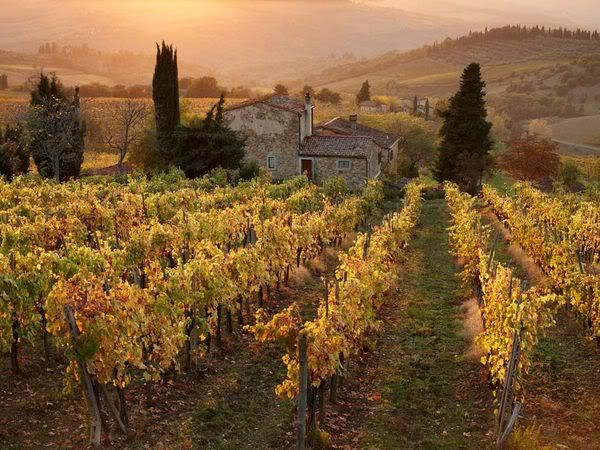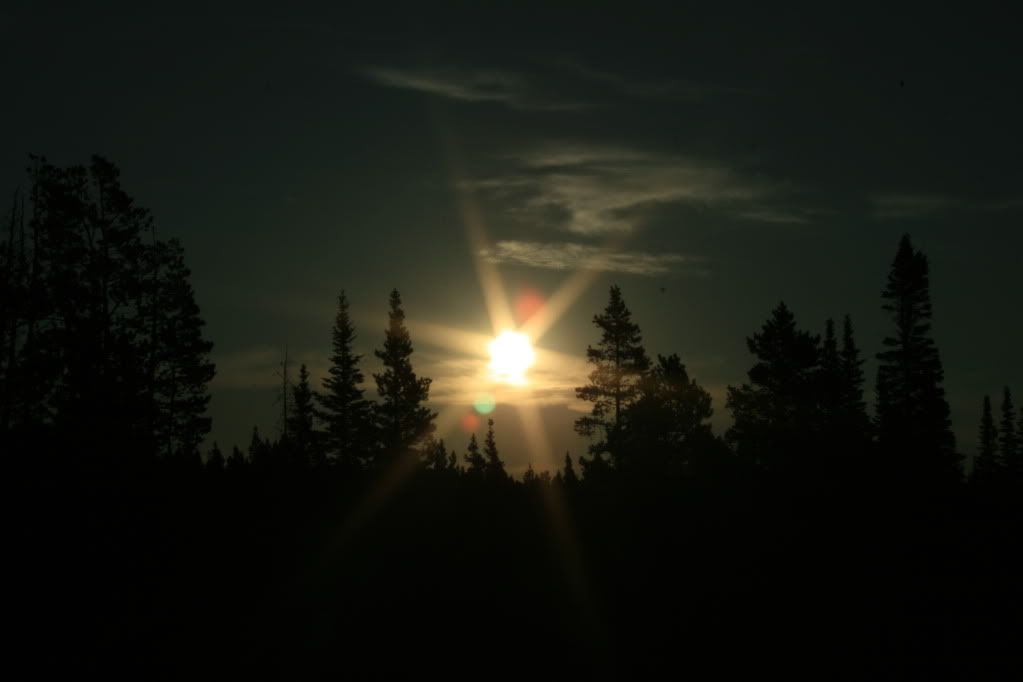There are two principal strains of healing in Italian vernacular culture: healing through the use of herbs, and spiritual healing. In some cases, both may be practiced by the same individual. Of the two, healing with herbs is considered less a matter of spiritual ability than of practical knowledge. Spiritual healing, in contrast, is believed to be more connected with personal power. This is variously called la forza (power), la virtù (virtue; also attribute); or il segno (the sign), and is generally believed to be inborn. But power alone is useless without the prayers, magical formulae and techniques that make up the cunning person’s craft. Knowledge and power are passed on through an initiation, most commonly at midnight on Christmas Eve mass, during the elevation of the host -- that magical moment of transformation in the Catholic liturgical year at which the world is transformed by the birth of the Savior, and the host is transformed into his body -- and thus, by association, any transformation can take place. The knowledge takes the form of prayers that call upon a saint or the Madonna, and in some cases an accompanying technique, which varies according to the nature of the spiritual cure. These formulas and techniques are secret; they cannot be passed on to others without the healer losing her or his power, and they can only be passed on at the appointed time in the ritual cycle. Often, this is the only initiation and training necessary for the transmission of simple charms. Healing knowledge and power are typically passed down within the family; in some cases, family members – typically a group of siblings or cousins – must work together in order to bring about the cure.
 As scholars have documented for other parts of Europe, spirits figure prominently as the helpers of Italian cunning folk. While many ordinary Italians living in traditional communities admit to belief in spirits, and occasionally even to contact with them, cunning folk seem to possess an intensified ability to commune with them above and beyond that of ordinary people. In many areas, healing is essentially conceptualized as a battle against malevolent spirits – whether those of the unquiet dead, witches, or others. Healers need spiritual allies in these battles, and many healers claim to have them in the form of spirits who guide and help them in their craft. The nature of these spirits, once again, is highly localized as well as idiosyncratic: they may be saints, personal ancestors, or helpful dead. They may appear to the healer in dreams and visions: trance and ecstatic states are a fundamental part of communicating with the spirits; they are doorways into the spiritual world for healers and magic workers. When cunning folk rely on saints or the Virgin Mary as helpers, they may maintain shrines to them, participate actively in the organization of festivals in their honor, and play active roles in religious sororities and fraternities that raise money for the feasts. Cures for certain illnesses may take place only on specific feast days or in the context of saints’ festivals. Thus, healing is closely connected to the seasonal and economic cycle of the community, and to the Catholic liturgical calendar.
As scholars have documented for other parts of Europe, spirits figure prominently as the helpers of Italian cunning folk. While many ordinary Italians living in traditional communities admit to belief in spirits, and occasionally even to contact with them, cunning folk seem to possess an intensified ability to commune with them above and beyond that of ordinary people. In many areas, healing is essentially conceptualized as a battle against malevolent spirits – whether those of the unquiet dead, witches, or others. Healers need spiritual allies in these battles, and many healers claim to have them in the form of spirits who guide and help them in their craft. The nature of these spirits, once again, is highly localized as well as idiosyncratic: they may be saints, personal ancestors, or helpful dead. They may appear to the healer in dreams and visions: trance and ecstatic states are a fundamental part of communicating with the spirits; they are doorways into the spiritual world for healers and magic workers. When cunning folk rely on saints or the Virgin Mary as helpers, they may maintain shrines to them, participate actively in the organization of festivals in their honor, and play active roles in religious sororities and fraternities that raise money for the feasts. Cures for certain illnesses may take place only on specific feast days or in the context of saints’ festivals. Thus, healing is closely connected to the seasonal and economic cycle of the community, and to the Catholic liturgical calendar.Italian cunning folk may use a variety of tools in their work which suggest a connection to Stregheria and Neo-Pagan Witchcraft. They commonly keep notebooks in which charms and prayers are recorded – the forerunners of modern-day books of shadows. Some use weapons of various types (daggers, swords, bayonets and even guns) to frighten evil spirits or symbolically cut away certain illnesses, such as worms. Ropes or cords may be used in binding spells and charms, while other tools may be entirely idiosyncratic.
 The Italian cunning tradition has a number of traits that suggest that some aspects of modern Stregheria may derive from it in part, and that many Italian Americans who see themselves as carriers of Stregheria grew up in families that preserved aspects of the rural Italian enchanted worldview. Like modern Neo-Paganism and revival witchcraft, this way of life was organized around a ritual year that followed the cycle of the seasons; the moon and sun influenced rhythms of work and production. Women were recognized as life-givers and nourishers, and were closely involved in the maintenance of shrines to a feminine divine figure, the Virgin Mary. Their immigrant ancestors may have been carriers of a tradition of healing that involved herbal and magical practices. They may have kept notebooks of charms and prayers that were precursors of today’s Neo-Pagan books of shadows. Their tools may have included knives, swords and other weapons designed to frighten away malevolent spirits, and their craft involved communication with helpers who took the form of ancestor spirits. Since these traditions could often be conflated with witchcraft in popular narratives, it is possible that this link persisted into the second, third and fourth generation after immigration, giving contemporary Streghe the impression that their ancestors belonged to an organized, hierarchical but secret society of witches. But Italian cunning craft also differs from modern Neo-Pagan Stregheria in important ways. It is emphatically not a pagan religion; there is no mention of a goddess and god, nor are deities ever drawn down into the bodies of practitioners. It exists within a largely Catholic worldview, albeit one permeated with ancestor spirits, magical practice and other elements that mark it as vernacular, rather than ecclesiastical, in nature. Absent, too, is the Wiccan ritual framework, and while there may be certain similarities between the Wiccan year cycle and that of rural Italy, that is because the former is based largely on the Irish agro-pastoral cycle, which shares a common heritage with that of other parts of Europe, including Italy.
The Italian cunning tradition has a number of traits that suggest that some aspects of modern Stregheria may derive from it in part, and that many Italian Americans who see themselves as carriers of Stregheria grew up in families that preserved aspects of the rural Italian enchanted worldview. Like modern Neo-Paganism and revival witchcraft, this way of life was organized around a ritual year that followed the cycle of the seasons; the moon and sun influenced rhythms of work and production. Women were recognized as life-givers and nourishers, and were closely involved in the maintenance of shrines to a feminine divine figure, the Virgin Mary. Their immigrant ancestors may have been carriers of a tradition of healing that involved herbal and magical practices. They may have kept notebooks of charms and prayers that were precursors of today’s Neo-Pagan books of shadows. Their tools may have included knives, swords and other weapons designed to frighten away malevolent spirits, and their craft involved communication with helpers who took the form of ancestor spirits. Since these traditions could often be conflated with witchcraft in popular narratives, it is possible that this link persisted into the second, third and fourth generation after immigration, giving contemporary Streghe the impression that their ancestors belonged to an organized, hierarchical but secret society of witches. But Italian cunning craft also differs from modern Neo-Pagan Stregheria in important ways. It is emphatically not a pagan religion; there is no mention of a goddess and god, nor are deities ever drawn down into the bodies of practitioners. It exists within a largely Catholic worldview, albeit one permeated with ancestor spirits, magical practice and other elements that mark it as vernacular, rather than ecclesiastical, in nature. Absent, too, is the Wiccan ritual framework, and while there may be certain similarities between the Wiccan year cycle and that of rural Italy, that is because the former is based largely on the Irish agro-pastoral cycle, which shares a common heritage with that of other parts of Europe, including Italy.But could an ancient pre-Christian religion involving the veneration of Diana have survived in Italian peasant tradition, only to be brought to North America by Italian immigrants? The lack of written evidence makes any answer to this question hypothetical at best, but from the historical record, such a scenario would be very unlikely. Three factors make the survival of a pagan religion in Italy into the 20th century, and its transmission through written documents such as Leland’s Aradia, improbable: the strong presence of Christianity throughout the peninsula from fairly early after the fall of the Roman Empire; the lack of a unified Italian culture and language until the late 19th century; and the relative isolation and lack of resources of the peasant classes – the very ones who are said to have preserved the religion, according to the Neo-Pagan mythos.
 Stregheria and Italian vernacular magic and healing are, then, quite different but interconnected traditions. Many Italian Americans who today see themselves as carriers of Stregheria grew up in families that preserved aspects of the enchanted worldview in an immigrant context. While Stregheria may be helping contemporary Italian Americans rediscover aspects of their roots and feel pride in their ethnic identity, its form, structure and cultural context are markedly different from those of the enchanted worldview and its associated practices in Italy. Yet Stregheria should not be interpreted as inauthentic, fake or contrived, for innovation and reclamation are part of the process of tradition. The enchanted worldview cannot exist in the context of contemporary urban North America; Italian Americans need new ways to construct and preserve ethnic identity, and for some, Stregheria satisfies those needs.
Stregheria and Italian vernacular magic and healing are, then, quite different but interconnected traditions. Many Italian Americans who today see themselves as carriers of Stregheria grew up in families that preserved aspects of the enchanted worldview in an immigrant context. While Stregheria may be helping contemporary Italian Americans rediscover aspects of their roots and feel pride in their ethnic identity, its form, structure and cultural context are markedly different from those of the enchanted worldview and its associated practices in Italy. Yet Stregheria should not be interpreted as inauthentic, fake or contrived, for innovation and reclamation are part of the process of tradition. The enchanted worldview cannot exist in the context of contemporary urban North America; Italian Americans need new ways to construct and preserve ethnic identity, and for some, Stregheria satisfies those needs..


No comments:
Post a Comment